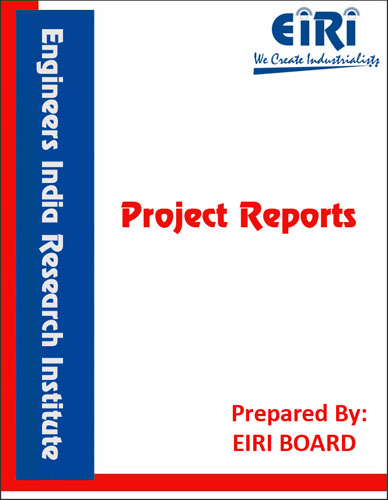COMMON FACILITY CENTRE FOR YARN DYEING
The project report includes Present Market Position and Expected Future Demand, Market Size, Statistics, Trends, SWOT Analysis and Forecasts. Report provides a comprehensive analysis from industry covering detailed reporting and evaluates the position of the industry by providing insights to the SWOT analysis of the industry.
We can prepare PROJECT REPORT as per your INVESTMENT PLAN for BANK LOAN REQUIREMENT and INDUSTRY ANALYSIS. All reports are prepared by highly qualified consultants and verified by a panel of experts.
Have Query? Click Here to Chat
Industry Expert is Online, Chat with him for more detail.

Setting up of Common Facility Centre (CFC), including Common Service Centre (CSC)
In a block, the CFC including CSC will be set up, having an area of about 1,32,000 sq.ft. with administrative office, internet facility, facilitation room, storage room, small dyeing unit, warping section, training centre, yarn godown etc. Detailed cost break-up of the project and plan layout is given in the project report. Land is required to be arranged by the Implementing Agency. For setting up of CFC, construction agency would be either a Central Government agency, State Govt. Agency or a competent agency selected through bidding.
Common facility centre for yarn dyeing provides good scope for new entrepreneur as well as established entrepreneurs.
The fact that dyes in solution in the dye bath leave the bath and are sobned by the fibre/yarn material during the dyeing process has been of interest to chemist and physicists for many years. Theories of dyeing the describe the Sorption (or desorption) process and the resulting dye-fiber bonds using the tools of thermodynamics have increased in complexity over the year. Further more, it must be recognized that the dyeing process in dynamic in nature. It normally entails changes in the dyeing temperature the dye concentration the bath composition and the fiber structure.
Affinity and diffusion are fundamental aspect of the dyeing process. The former describes the force by which the dye is attracted by the fiber and the latter describes the speed with which it travels within the fiber/yarn a from areas of higher concentration to areas of lower concentration. Alone or together with fiber characteristics, affinity and diffusion determine the speed of dyeing, its temperature dependency, the equilibrium exhaustion of the dye, and some of its fastness properties.
Two fundamental dyeing processes have been distinguished, the nonionic and the ionic dyeing process. The former refers to the dyeing of synthetic fibers such as polyester, nylon and triocetate by disperse dye.
INTRODUCTION
PROPERTIES OF POLYESTER FIBRES
PROPERTIES OF DISPERSE DYES
DISPERSE DYES AND ITS CLASSIFICATION
USES AND APPLICATION
B.I.S. SPECIFICATION
GUIDELINES FOR IMPLEMENTATION OF THE COMMON FACILITY CENTRE
MARKET SURVEY
MAJOR PLAYERS IN TEXTILE INDUSTRY
DYES USED IN POLYESTER YARN DYEING
PROCESS OF MANUFACTURE OF POLYESTER YARN DYEING
PREPARATION FOR DYEING OF POLYESTER YARN
PROCESSING DETAILS AND MECHANISM OF POLYESTER DYEING
METHED OF DISPERSE DYEING
POLYESTER DYEING RECIPE
STAGES AND PARAMETERS IN POLYESTER YARN DYEING
SEQUENCES IN POLYESTER YARN DYEING
PROCESS FLOW DIAGRAM
METHOD OF NYLON YARN DYEING
PROCESS FLOW DIAGRAM
DETAILS OF YARN CONDITIONING
PLANT LAYOUT
SUPPLIERS OF RAW MATERIALS FOR YARN DYEING
SUPPLIERS OF PLANT & MACHINERY FOR YARN DYEING
APPENDIX – A :
1. COST OF PLANT ECONOMICS
2. LAND & BUILDING
3. PLANT AND MACHINERY
4. FIXED CAPITAL INVESTMENT
5. RAW MATERIAL
6. SALARY AND WAGES
7. UTILITIES AND OVERHEADS
8. TOTAL WORKING CAPITAL
9. COST OF PRODUCTION
10. PROFITABILITY ANALYSIS
11. BREAK EVEN POINT
12. RESOURCES OF FINANCE
13. INTEREST CHART
14. DEPRECIATION CHART
15. CASH FLOW STATEMENT
16. PROJECTED BALANCE SHEET



